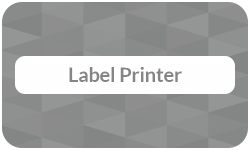
There are many types of printers available nowadays, each one designed for specific tasks, from photos and document printing to producing barcodes and product tags. Among these printers, label printers serve a specialized purpose: creating adhesive-backed labels. In this article, we’ll explore what exactly a label printer is, its types, printer paper, and also what to consider when choosing one.
Definition: Label printer
A label printer is a specialized printing device that is designed to produce adhesive labels, tags, and barcodes. Unlike standard desktop printers, label printers are built to handle various label materials and formats, typically rolls instead of individual sheets.
Printing services at BachelorPrint
- Individual solutions & personal support
- High print quality & fast production times
- Wide range of print products for every need
Learn more!
Types
Label printers come in several types, each one using a different printing method. The most common are inkjet, laser, and thermal label printers.
Inkjet
Inkjet label printers work like inkjet printers in the way that they spray tiny droplets of liquid ink onto paper. They’re ideal for producing high-resolution, full-color labels for product packaging or marketing materials. While they offer excellent print quality, inkjet printers can be more expensive to operate due to the cost of ink and compatible labels.
Best for: Color-rich designs, branding, short-run custom labels.
Laser
Laser label printers use heat to bond toner to the label surface and are better for printing waterproof labels. They produce sharp, smudge-resistant text and images, which makes them suitable for high-volume printing tasks. Laser printers tend to be faster than inkjet models and are generally more cost-efficient for black-and-white labels.
Best for: Office use, shipping labels, retail barcode printing, and large batches.
Thermal
Thermal label printers come in two types: direct thermal and thermal transfer. The biggest advantage of thermal label printers is that they can print one label at a time, whereas laser and inkjet printers are sheet-form printers and therefore can only print an entire sheet.
Direct thermal (DT) label printers use heat-sensitive labels that darken when heated. They don’t require ink or toner, making them low-maintenance and ideal for short-term labels (six months or less) like shipping, patient wristbands, or receipts.
Thermal transfer (TT) label printers use a heated ink ribbon coated with wax, resin, or a blend of both to transfer printing ink to the label, which creates durable and long-lasting prints that are resistant to fading and moisture. TT printers are the go-to in the industry since the lower heat settings allow for paper and plastic film labels while consistently maintaining durability when coming in contact with chemicals, varying temperatures, and long shipping.
Label printer media
Label printers support various media formats depending on the technology they use and the application they serve. The two main media formats are rolls and sheets, which each offer different advantages when it comes to flexibility, waste, and print volume.
Roll media
Roll media consists of labels that are wound around a core. They’re used in thermal label printers and some industrial inkjet printers.
- Continuous roll: A single, long roll that lacks pre-defined label cuts. The label printer can cut each label to a custom length.
- Die-cut roll: Pre-cut labels with gaps between each one. They’re common in shipping and retail.
- Butt-cut roll: Labels are cut edge-to-edge, with no gaps between them. They’re less expensive and use space more efficiently.
- Black mark/notch roll: Die-cut labels with black marks or notches on the backing paper for precise cutting or sensor alignment.

Sheet media
Sheet media includes standard-sized sheets (commonly A4 or Letter) with multiple labels arranged in rows and columns, typically used in inkjet and laser printers.
- Die-cut sheet: Pre-cut labels on a flat sheet, e.g., address labels and name badges.
- Full-sheet label: Entire sheet is adhesive-backed, useful for custom shapes or oversized labels.

Label printers vs. label makers
Label makers are small, portable printers that are used for on-site label printing. They’re less expensive and suitable for small-quantity label printing. The label content can be manually typed in via the integrated keyboard, and the handheld printer prints it directly onto the label.
⇨ Label makers are recommended for quick and simple label printing.
For bulk printing in businesses or factories, label printers are recommended since they can be connected to an electronic device and automatically generate custom labels. They’re also more durable, higher quality, and can handle multiple lines and images.
⇨ Label printers are recommended for e-commerce and logistics.

Copy and print from £0.08
- High-quality copies & prints for any project
- Vibrant color prints or sharp black & white prints
- Online copy and print services delivered straight to your door
Learn more!
FAQs
Yes, if you regularly print labels for shipping, product packaging, or organisation . A label printer saves time, improves print quality and durability, and can reduce long-term costs compared to using regular printers and label sheets.
Not necessarily. While standard inkjet or laser printers can print on label sheets, a label printer is designed specifically for labels and is more efficient, especially for high volumes and long-lasting prints.
That depends on the type. Thermal label printers are the most common since they use heat and don’t require ink or toner. Inkjet or laser label printers do require ink or toner, just like standard printers.
A label maker is a handheld or standalone device with a built-in keyboard and screen. It’s used for quick, simple labels, e.g., for folders, home labels, cables, and storage bins.
A label printer, on the other hand, connects to a computer or mobile device and can produce more complex or customized labels, often in larger quantities.